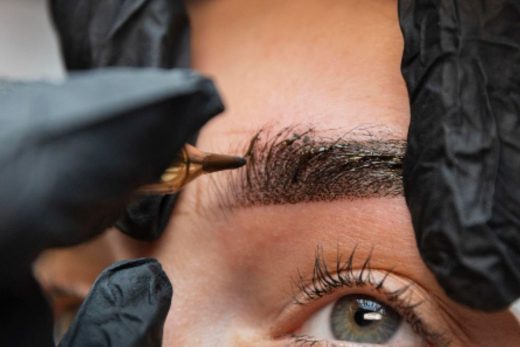We live in extraordinary days around the world where we spend 24 hours at home. Therefore, it is more important than ever that the air we breathe in our homes is clean and contain maximum oxygen. According to a NASA study, some plants can act as filters and absorb chemicals in the air indoors. We have brought together some plants suggested by NASA and can be found in our country.
1 – Cameltoe
By definition, it can be said to be a plant with a long stem and dark green color, leather-like texture, deeply fragmented and oval-shaped palm. It is a decorative plant that can grow up to 60 cm and has large, showy and shiny leaves. Let’s come to those who want to grow Cameltoe as a living room plant in pots… Irrigation is of course very important for Devetaban. The water of the cameltoe plant should not be too cold. If you irrigate using very cold water, your tropical plant will be damaged. However, the frequency of irrigation should progress in proportion to the temperature of the air. Cameltoe does not like limited areas, so its pot should be large.
2 – Pasha Sword (Sansevieria)
Popularly known as Pasha Sword or Prophet’s Sword. It is an ideal living room plant to ensure good ventilation of airless indoor environments. As a result of many years of research on this humble plant, it has been determined that it has the ability to absorb many air pollutants, especially carbon monoxide and nitrogen monoxide gases. Compared to other hall plants, they produce more oxygen at night and make the air of the environment cleaner. It can stay in direct sunlight as well as continue its development in shadow areas. The soil should be allowed to dry before watering. It has no special demands in terms of moisture.
3 – Cactus
Cactus is actually a type of plant that can withstand thirst in a desert environment in nature. As long as you prepare the necessary environment for cacti, whose easy care and aesthetic structure are known, they can stay alive for a very long time. They are divided into two groups as prickly and non-thorny (succulents). Since cactus is a plant of harsh climates and is not damaged by sunlight in any way, it has a radiation-absorbing feature. The plant, which is thought to absorb and reduce the harmful effects of radio signals in the air, can be used especially near television and computers.
4 – Areka Palm
Potted plant that adorns homes and offices that are desired to remain evergreen; Areca Palm (Living Room Plant). This plant is a factory that produces oxygen throughout the day. It cleans the air by absorbing xylene and toluene gases. An Areka Palm sapling grown up to 2m releases 1 liter of water into the air in 24 hours. If the number of leaves or saplings is high, it acts as a good air humidifier accordingly. You can also grow palm trees, which are a wonderful decoration piece, in a beautiful corner of your home.
5 – Dracaena
Dracaena, also known as Marginata, is a plant that seeks room temperature in all seasons. Dracaena, which is perfect for purifying the ambient air from benzene, trichlorethylene and xylene, can sometimes be toxic to cats and dogs. If you have a cat or dog, we recommend that you do some research before buying dracaena.
6 – Benjamin Flower (Ficus)
Benjamin Flower is an attractive flower with long green leaves. Being sensitive to sunlight, the Benjamin flower tends towards the sun as it is exposed to light. Therefore, it needs more sunlight than other flowers. A very bright environment is ideal for the Benjamin plant. Since the Benjamin flower adapts to its environment and temperature, it is very important that these conditions are not changed suddenly and the plant is not shocked. If you want to achieve integrity in your home with designer flowers, Benjamin flower is one of the most ideal plants for this.
7 – Yuka
Yuka, also known as Massengena flower, likes to receive plenty of light, is durable and is a wonderful living room plant. It helps you create a pleasant energy and ambiance in your home with its leaves pointing towards the sun. Since it is not watered very often, it is one of the easy-to-maintain plant species, so it is preferred.
8 – Pilea Peperomioides (Chinese Money Flower)
The name of the Pilea plant, also known as the Chinese Money Flower, does not date back to ancient times. It is a plant named “Award of Garden Merit” by the British Royal Horticultural Society. Pilea, which has become one of the plant trends in recent years, especially in Scandinavian home decorations, is one of the most important pieces for plant collectors. It is the growing season from spring to autumn, it develops rapidly.
9 – Potos Ivy (Epipremnum Aureum)
Potos Ivy, also known as Pothos or Epipremnum Aureum, is an ivy plant found in many homes today. But two excellent health benefits are often unknown. Potos cleans the air of the room in which it develops and helps you to relax if your eyes are bloodshot or you have trouble with them. In addition, it prevents the occurrence of eye pressure, cataracts and blackwater diseases and helps their treatment. Potos Ivy has large leaves that form white streaks or spots when grown outdoors. Room temperature should be between 16 and 24 degrees and they like to live in closed areas. They need some light but should not be exposed to direct sunlight.
10 – Rubber Flower
It is a plant with nice and large leaves. It is a highly preferred flower due to its adaptability to every environment. On the other hand, it is easy to maintain and grows rapidly, increasing its popularity. Rubber Flower is highly preferred because of its simple growth, rapid development and adaptability to any environment. It grows in almost all soil types.
11 – Craton Plant
The craton plant is an indoor plant and it is a long-lasting living room ornamental plant that adapts to the environment in a short time with its yellow, green dense large decorative leaves. It can also be fed by alternative light sources, so it does not require direct sunlight.
12 – Schefflera
It is a very resistant indoor and outdoor plant with leaves in green, yellow, green and white colors resembling fingers. Both types can be used for garden decoration in places with moderate climates. They provide a beautiful view in semi-shaded places. Although the peach flower shed the leaves under it, it continues to grow in size by giving new leaves from the top.
13 – Ladder of Love
This plant has very dense and tiny leaves, it fights formaldehyde and xylene in the air. Although it does not need direct exposure to the sun, keeping it in a bright place can be considered a prerequisite for a healthy growth of the Love Ladder plant.





